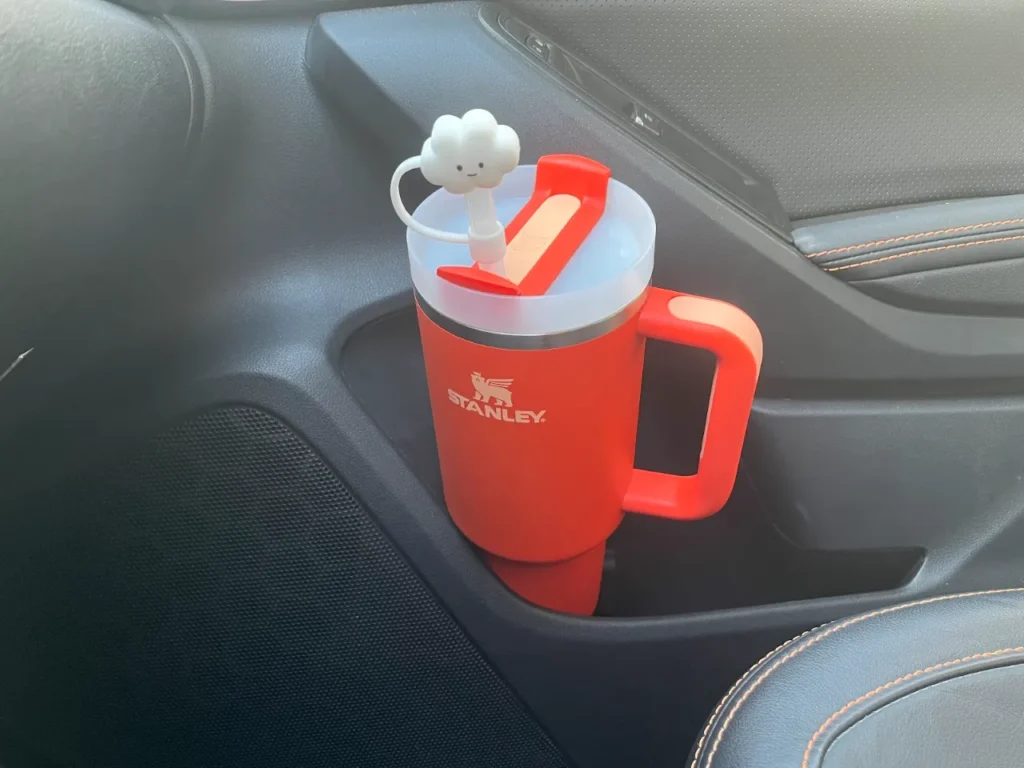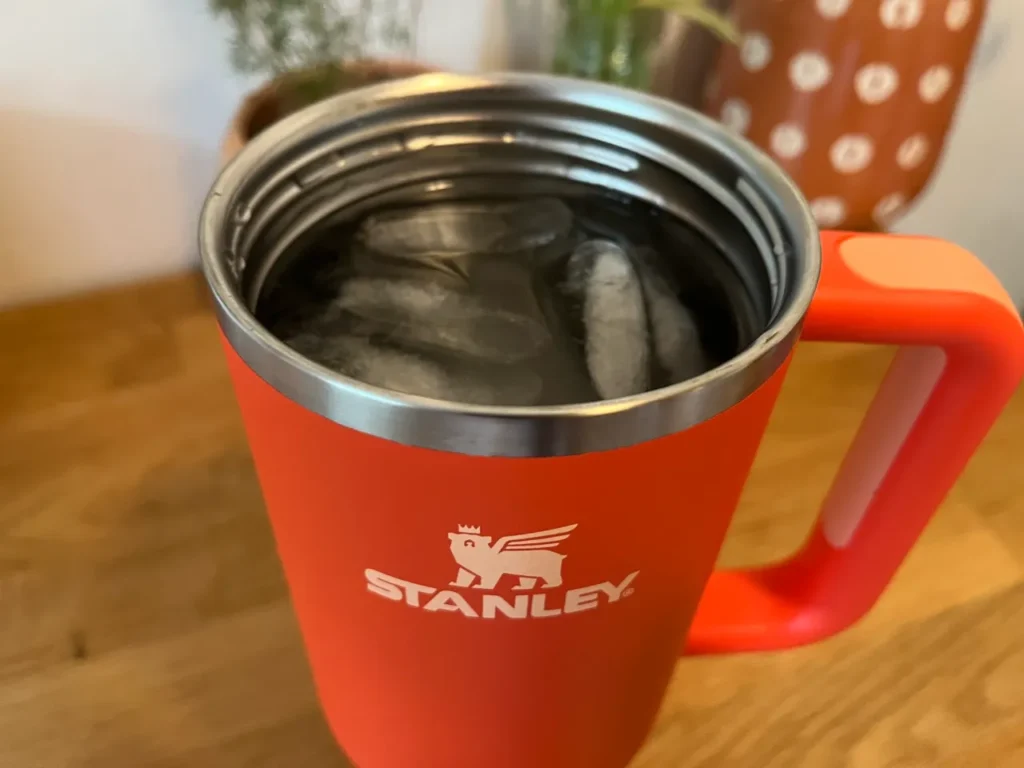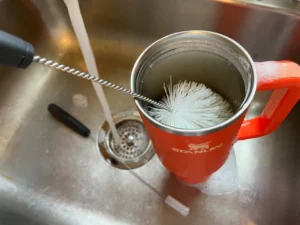Even though Stanley Cups are made of stainless steel, they’re not quite as sturdy as you might think. Drops, hard bumps, and excessive pressure are often enough to put a dent in your beloved tumbler.
But why exactly are Stanley Cups dent-prone and what can you do about it if you’ve got a dent?
Stanley Cups are prone to denting because they’re made of thin, lightweight layers of stainless steel. It’s great for keeping the weight down, but makes them less durable than you might think. Plus, the fact that they’re vacuum-sealed means that there’s a constant inward pressure on the walls, making denting more likely in the event of a drop or bump.
And unfortunately, drops and physical damage aren’t covered under Stanley’s limited lifetime warranty.
You’ll either need to live with it, replace your Stanley Cup, or try to fix it — by heating the dent with a hair dryer, carefully cooling the heated area with dry ice, then applying pressure around the edges of the dent. Just be aware that there’s a small chance this could compromise your Stanley Cup’s vacuum seal, doing more harm than good.
Stanley Cups are really popular for a lot of good reasons — they’re a super convenient way to stay hydrated, they come in a bunch of cool colors, and they can keep your water nice and cold for an entire day of school or work.
But you may have learned the hard way why their durability doesn’t make the list.
Do Stanley Cups Dent Easily?

It’s pretty tough to dent a Stanley Cup with normal use, but drops and hard bumps are fairly likely to dent your tumbler’s exterior.
The reason is, Stanley Cups are dual wall vacuum-insulated. And while that’s great for keeping your drinks hot or cold (a vacuum seal is one of the absolute best insulators), it’s not so great for your tumbler’s durability.
Stanley Cups are made of two thin layers of stainless steel with a vacuum in between — which makes them dent-prone for two reasons.
For starters, the thin layers may help keep your tumbler’s weight down, which is nice because Stanleys are fairly bulky already, but the tradeoff is that they can dent more easily.
And second, your Stanley’s vacuum seal creates a constant inward pressure on its walls. Meaning it may take less of an impact to cause a dent.
But ultimately, this isn’t a problem exclusive to Stanley Cups. HydroFlasks, Yetis, and any other vacuum-insulated stainless steel bottle or tumbler will have the same issue — so there’s not really much you can do, aside from being as careful as possible.
Does Stanley’s Warranty Cover Dents?
Stanley offers a very generous limited lifetime warranty on all of their tumblers — meaning that any defects or damage caused by normal use is covered.
Unfortunately, dropping or smashing your Stanley doesn’t qualify as ‘normal use’.
Unless your Stanley arrived damaged, you’re out of luck.
My Dented Stanley Isn’t Keeping My Drinks Cold Anymore

While a dent in your Stanley Cup is usually nothing more than an eyesore, the impact that caused the dent may occasionally damage your Stanley’s vacuum seal — meaning your Stanley Cup won’t be able to keep drinks hot or cold for nearly as long.
If you think the dent in your Stanley Cup may have compromised its vacuum seal, there are a couple ways to test:
- Bring a pot of water to a boil, fill your Stanley with boiling water, and wait five or ten minutes. If the walls of your Stanley become hot to the touch, there’s a good chance the vacuum seal is damaged.
- Fill your Stanley with ice cold water and let it sit at room temperature for a half hour or so. If any condensation occurs on the walls of your Stanley, not the lid, the vacuum seal has likely been compromised.
Unfortunately, if your Stanley’s vacuum-insulation is damaged, there’s not really a way to fix it.
You can continue to use your Stanley, but it won’t keep drinks hot or cold. If that’s important to you, you’ll just need to buy a replacement.
How To Fix A Dented Stanley Cup
If you have a dent in your Stanley Cup, it’s often best left alone. Unless your vacuum seal has been damaged, your tumbler should still work just fine.
But if you’re dead set on trying to fix it, there is one method that sometimes works. Just be aware that you may cause further damage to your Stanley Cup, as there’s a small chance that its vacuum seal could get damaged in the process.
But as long as you’re aware of the risks and still want to give it a try, you’ll just need a hair dryer and some dry ice to start:
- Heat the dented area on your Stanley Cup with a blow dryer set to max heat for a few minutes.
- Using proper safety equipment, rub some dry ice on the dent. Sometimes, the rapid drop in temperature will cause the dent to pop back out.
- Using your hands, apply a firm squeezing pressure along the sides of the dent to encourage it to pop back into place.
- Repeat steps 1 to 3 a few times, as necessary.
Some dents are really just unfixable, especially those around the bottom edge of the tumbler — so don’t be too surprised if you have no luck.




